Mulching tomatoes in a greenhouse with sawdust, grass cuttings, straw and other materials
Mulching of garden plantings is an agricultural technique used to protect the soil and cultivated plants from various troubles - freezing, drying out, violent growth of weeds, in some cases - from the spread of diseases. Mulching tomatoes in a greenhouse is an event that facilitates care and is aimed at reducing the ripening time of the crop and increasing its qualitative and quantitative characteristics.
Benefits of mulching
You do not need to mulch the beds with tomatoes - nothing terrible will happen, they will grow, bloom, set fruits and ripen. And also weeds will grow, pathogens will develop, additional efforts will have to be spent on maintaining the health of plantings.
Mulch covering the soil in the garden beds offers the following benefits.
- The top layer of the earth does not dry out, the dry crust formed on its surface without a protective coating does not impede the access of oxygen. Accordingly, the soil can be loosened less often.
- Properly applied mulch helps to retain moisture in the soil, which reduces the amount of watering. It is also important that water poured under the root erodes the soil. This does not happen in mulch beds.
- Evaporation from the soil surface decreases, which is especially important in greenhouses, film or polycarbonate: high air humidity is a factor that provokes the intensive development of fungal infections.
A layer of mulch reduces the risk defeat of tomatoes by late blight - the main enemy of greenhouse nightshades.
- Organic mulch reduces the amount of fertilizer needed: the bottom layer, touching the ground, serves as food for beneficial microorganisms and worms, which, in turn, enrich the soil with the results of their activities.
- The ripening time of the fruits is reduced, their quality increases.
Thus, a simple agrotechnical measure greatly simplifies the care of the beds with your favorite tomatoes.
How to mulch the beds?
Mulching materials are divided into two types - organic and inorganic. The first includes everything that grows (grass, bark, leaves), including their derivatives - cardboard and paper. The second type is film and other materials produced by industry.
Inorganic materials
They have two advantages over organic:
- Durability. They are able to serve as reliable protection for the whole season, some species and more.
- Good thermal insulation. The soil under them is always a couple of degrees warmer than the air. This contributes to the faster development of tomatoes.
As a coating, materials of industrial production are used - films and agricultural fabrics. The latter allow moisture to pass through, allow the root system to breathe, and serve up to 5 years.
Roofing material is not used in greenhouses because of its high toxicity; it is also undesirable to use this material in the open field.
However, these options require significant expenses, so instead of purchased materials, they take plain polyethylene or old bags. But remember that mold often appears under the plastic wrap.
Of the inorganic mulching materials for tomatoes, a red film or agro-cloth is considered the most suitable, since the soil in this case does not overheat. The cover is chosen completely opaque, strong so that weeds cannot penetrate it.
It is advisable to use inorganic at the beginning of the season, when the air temperature is not very high. The greenhouse effect created by it does not allow the seedlings to freeze and stop in development. When warmth comes, it is replaced with organic mulch so that the roots do not overheat, and the film coating does not become a refuge for slugs and other unwanted inhabitants of the greenhouse.
Pebbles, crushed stone, expanded clay are not used in greenhouses for mulching tomatoes. They are of no use at all, but they will cause a lot of inconvenience when preparing the beds for the next season.
Organic mulch
Nature is more inventive, and the choice of mulch for tomatoes is wider - freshly cut grass, hay, leaves, sawdust, tree bark, etc. When decomposing, they feed the soil with various microelements - depending on which of them are in insufficient quantities, select one or other materials.
Straw
It has excellent air and moisture permeability and retains heat well. Stacked in a layer of 10-15 cm, straw creates a protective barrier that significantly slows down the development of diseases:
- various leaf spots;
- rot;
- anthracnose.
The disadvantage of straw mulching is that rodents and insect pests often settle in it.
Freshly cut grass
Freshly cut young meadow grass feeds tomatoes with nitrogen. Lay it in a thick layer - after its natural precipitation, the height of the protection should be at least 5 cm.
To prevent decay processes that infect the soil, as well as to get rid of possible pests, the cut grass is pre-dried in the sun for 1-2 days.
The disadvantage of mulching with cut grass is that it decomposes quickly, it has to be updated frequently.
Instead of grass, cut weeds are often used, which have not yet begun to bloom. They also need to be pre-dried in the sun.
In early spring, greenhouses are sown with greenhouse plants that structure the soil during growth. After mowing them, you can mulch the plantings, while fertilizing them.
As an option, use finely chopped young shoots of willow, pine, oak. True, it is possible that by the fall such material will take root, and it will be difficult to remove it.
Forest mulch
Forest litter collected in a mixed or coniferous forest will last a long time, adding beneficial microorganisms and microelements to the soil. Usually, for mulching, they take the topmost layer of soil with coniferous and / or leaf litter, pieces of bark.
When using coniferous mulch, you need to take care of the means that prevent soil acidification - wood ash, dolomite flour, lime.
Can I mulch tomatoes with sawdust?
Sawdust, small shavings, pieces of bark - all woodworking waste is also a good tool for mulching tomato beds in greenhouses.
The use of wood waste has its own characteristics:
- before mulching with sawdust and crushed bark, they are well dried;
- layer thickness is 8 cm;
- the laid mulch must be spilled with a solution urea (5%);
The material increases the acidity of the soil, so chalk, slaked lime or dolomite flour are sprinkled on top of it.
Compost
Excellent mulching material, rich in nutrients useful for tomatoes. However, it has two disadvantages:
- the worms living in the ground process it rather quickly.
- tomatoes actively grow tops, but they form very few flowers and, accordingly, fruits.
To mitigate these effects, it is used as an addition to other types of mulch, such as paper or cardboard.
Paper, cardboard
Since these materials are made from wood, they are often used as mulch. Old newspapers, magazines, unnecessary cardboard packaging of food products are finely cut and stacked in a thick layer. So that when the greenhouse is aired, the light pieces are not crushed by the wind, compost is placed on top. This mulch will last 2-3 years.
The only drawback of paper protection is that you need to stir it regularly so that small pieces do not start to rot.
Pure peat is not used as organic mulch, as it increases the acidity of the soil, as well as manure, especially fresh manure, so as not to burn the roots.
Materials such as sunflower husks, nutshells, and buckwheat husks are no less successfully used for mulching. True, they are not available to all summer residents.
How to mulch tomatoes?
Before you start mulching your greenhouse tomato beds, it is important to understand a few rules that affect the final result.
- For heated greenhouses, where the ground is warm all the time, the timing does not matter - the mulch layer is added or renewed at any time as needed.
- If the greenhouse is not heated, they wait until the threat of return frosts has finally passed, and the soil warms up enough. A layer of mulch makes it difficult to warm up the earth, which delays the planting of seedlings.
- The soil is preliminarily cleaned of last year's plant residues, enriched with granular fertilizers, and deoxidizers are added to it.
When using organic matter, tomatoes need watering more rarely, but plentiful in order to soak the mulching layer with water.
Mulche also requires attention: as it develops or the layer becomes thinner, it is renewed.
Experienced summer residents recommend spilling a solution of EM preparations over organic mulch. A simple procedure creates uncomfortable conditions for ants and slugs and they leave the greenhouse. In addition, the entire organic layer, including the renewable one, completely decomposes during the season and returns to the soil.
Industrial roll materials are spread over a flat bed and cross cuts are made at the tomato planting points. Organic matter is scattered after planting the seedlings, leaving free space around the stem.
Mulching tomatoes in a greenhouse - although a somewhat costly or troublesome undertaking, in any case pays for itself by significantly facilitating the summer life of a summer resident: the number of watering is reduced, the amount of fertilizers and crop protection means from diseases is reduced, there is no need to constantly loosen the ground and pull out weeds, overloading the back. A huge plus to these pleasant little things is a high-quality tomato harvest.

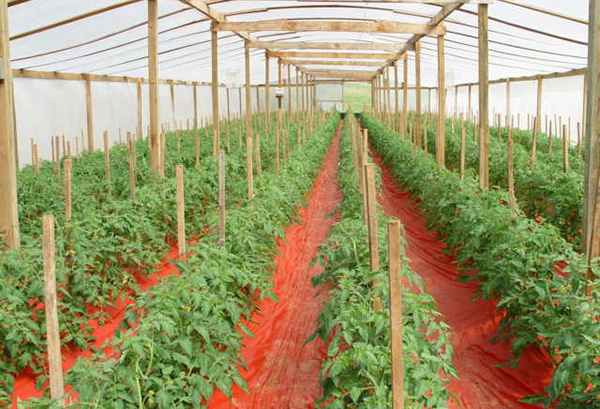
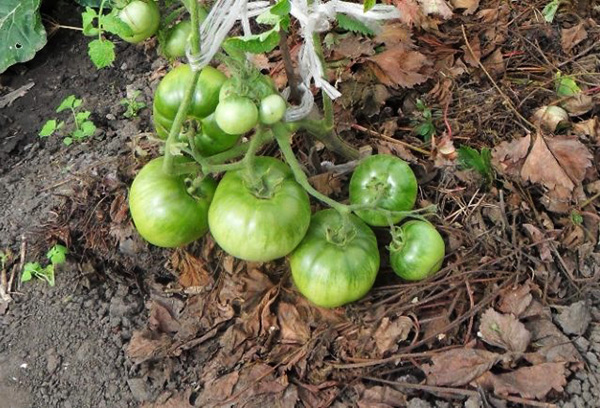
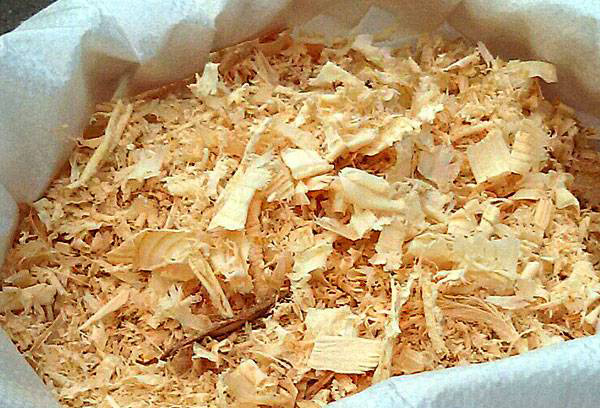
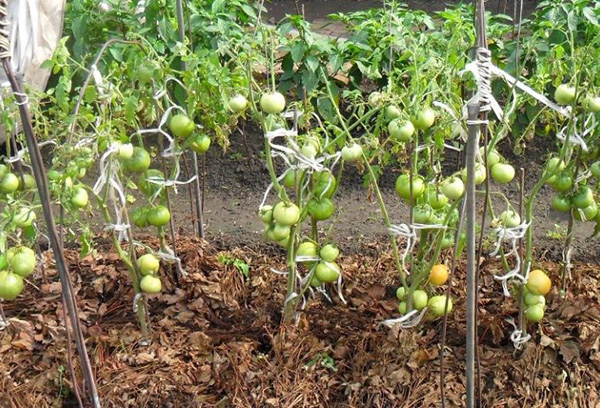

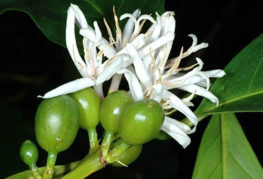
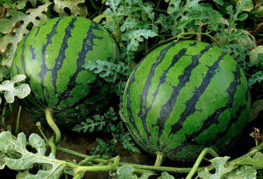
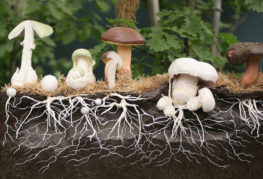
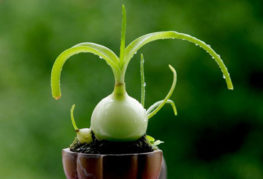
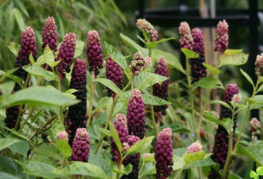
and will be published shortly.